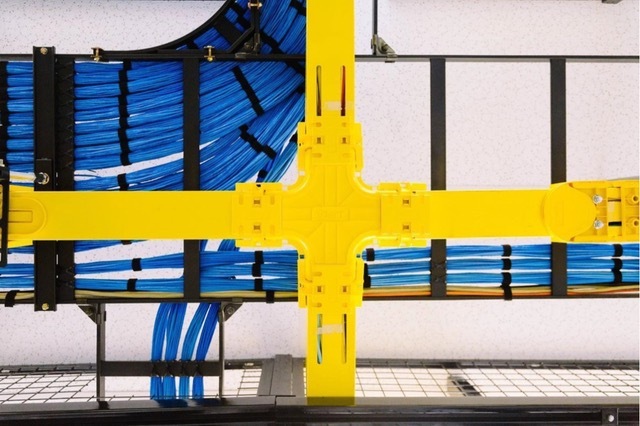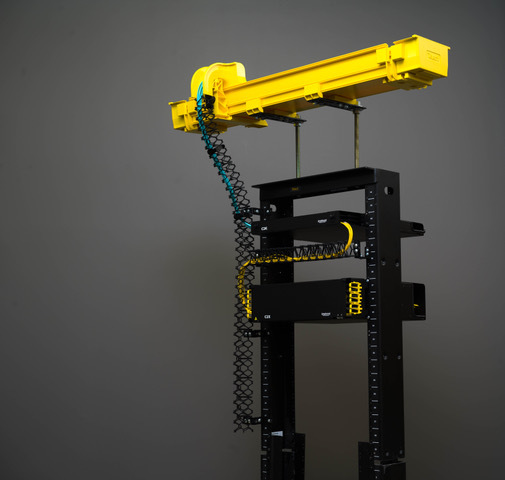
A standardised cable management strategy is essential for maintaining high fibre performance across a network. It streamlines adds, moves and changes (AMCs), ensuring efficiency and reliability. Traditional routing options, such as split tube and slotted duct, present trade-offs between cost, protection and usability. While split tube offers affordability, it poses installation difficulties and minimal fibre protection. Slotted duct provides more protection but is rigid, hard to access and costly to maintain—making it labour intensive and potentially damaging during upgrades.
The shift toward intelligent networks has placed increased pressure on operators across the globe to modernise legacy infrastructure quickly and cost-effectively. In Europe, where aging networks in historic buildings often clash with today’s high-density fibre needs, the demand for modular, non-invasive routing solutions has never been greater. Amphenol’s innovative approach addresses these pain points by offering retrofit-friendly components that accommodate variable ceiling heights and legacy cable trays—without requiring structural modifications.
Flexible, Protective and Cost-Effective Cable Routing
A next-generation fibre routing solution redefines cable management by merging the best features of existing systems. It combines the flexibility of split tube with superior access over slotted duct, while providing significantly enhanced protection against pinching and bending. Designed to simplify installation and customisation, this system allows users to cut sections as needed based on the application, reducing material waste and costs.
This solution excels in both form and function. Its lightweight, durable construction protects cables as they’re guided from wire baskets to equipment, especially in dynamic environments like data centres. Unlike traditional systems that often require adapters and hybrid installations, this new method offers an all-in-one routing approach that removes the need for transitional hardware—boosting speed, reducing cost and improving safety.
Amphenol notes growing interest in these flexible raceway systems from both cloud providers and national broadband initiatives. Compact raceways are particularly valuable in modular data halls, where every square meter is optimised. These facilities benefit from the raceway’s
reduced footprint and zero-tool install process, which minimises labour hours and supports environmentally conscious builds—a key consideration in EU-funded network expansions.

A Complete Raceway System
A comprehensive fibre raceway system is built for scalability and ease of use. It supports growing bandwidth demands while reducing the cost of ownership. The ideal system will include a full line of troughs, elbows, tees, off-ramps and articulating links—all designed to quickly snap together without specialised tools or cutting.
Ideal for facilities of all sizes, this raceway solution should be engineered to support high-density environments with configurations such as a 4×24-inch system. This robust setup essentially doubles the capacity of traditional 4×12 inch systems, making it especially useful for managing patch cords over high-density distribution frames.
Across Europe, service providers are actively evaluating scalable cable management systems that meet both operational efficiency goals and strict regulatory standards. Amphenol’s 4×24 raceway configurations, which double the capacity of traditional systems, align well with the high-density buildouts seen in major markets such as those that exist in Germany and France. Pre-configured bill of materials and tailored design packages simplify procurement and planning, making deployment faster and more predictable—even in legacy environments.

Fast, Modular Expansion Options
Similar to the building toys we played with as kids, an express line of components contributes to both speed of use and simplicity of design. Snap-on modules will eliminate the need for cutting or notching existing raceways. For example, a T-intersection module can be used to create clean intersections without fibre disruption, while an “off-ramp” enables smooth exits from the trough, maintaining a consistent 30mm cable bend radius.
One system on the market utilises a patented ratcheting bracket system, making installation fast and secure. Flexibility of this system is further enhanced with universal compatibility—these components can attach not only to the raceway system of the same manufacturer but also to raceways from other major manufacturers simply by using compatible adapters.
Solutions for Tight Spaces
For complex routing in tight areas, look for a modular link system which offers a highly manoeuvrable solution. These snap-together links articulate in multiple directions, making 90-degree turns easy using as few as four links. This system is ideal for negotiating horizontal and vertical paths where traditional routing hardware would be too bulky or inflexible.
Custom-Configured Engineering Support
Finally, it must be recognised that no two network environments are the same. Custom configuration services will provide customers with a fully tailored overhead layout complete with to-scale drawings and a detailed materials inventory.
Global partners are already benefitting from this tailored design approach. For instance, organisations with mixed-use office and telecom spaces have leveraged Amphenol’s engineering support to implement fibre upgrades without major structural alterations—ensuring consistent performance while maintaining historical integrity.
Conclusion: The Smart Choice for Evolving Networks
Whether expanding a high-density data centre or upgrading existing fibre infrastructure, modern cable management systems offer unmatched adaptability, protection and ease of installation. From modular design to tailored engineering support, these solutions are built to future-proof your network while keeping costs and complexity low.
Read more from the Broadband Journal of the SCTE Fall 2025 issue here.
Read the Broadband Library Fall 2025 issue here.

